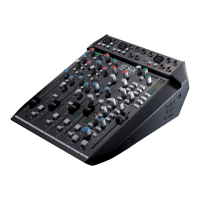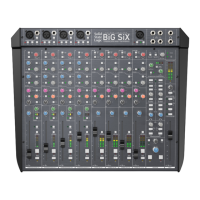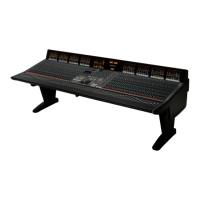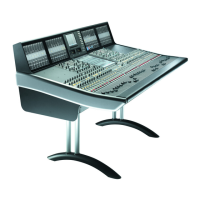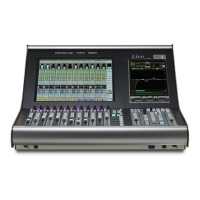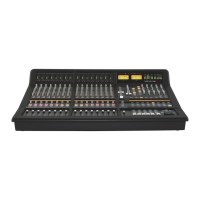The SL911 Input/Output Module
The I/O module has two independent signal paths. Each path has its own input and
fader. The module automatically powers up in a standard output routing
configuration determined by the master desk status. The output routing, however, can
be over-ridden locally at any time, to provide extra flexibility of operation.
The two inputs are the CHANNEL INPUT and the MONITOR input.
The two faders are the LARGE FADER and the SMALL FADER (LF and SF for short).
Each fader has an associated pan control.
The path fed by the Channel Mic/Line Input stage is designated the ‘CHANNEL’
path. The path fed by the Tape/Group Monitor Input is designated the ‘MONITOR‘
path.
The module’s outputs are the main Stereo/LCR bus, the 48-track Routing Matrix at the
top of the module, the four Stereo Subgroup busses A, B, C and D (immediately below
the Multitrack Routing Matrix) and the channel Group Output.
Either or both faders can feed the main Stereo bus (‘Mix’).
Either fader can feed the Multitrack Routing Matrix and Stereo Subgroup busses or the
Group Output.
On channels 1-48, the Group Output can also be fed by the multitrack mix bus
corresponding to that channel.
The Multitrack and Stereo Subgroup busses can also be fed by any of the Auxiliary
send controls, allowing additional effects sends or cue mixes to be generated.
EQ, Filters, Dynamics and Aux send controls can be switched into either signal path.
Obviously there are many possible permutations of signal routing, allowing an
enormous number of creative possibilities. This section looks at each control on the
SL911 module individually, with a brief summary of the routing possibilities. Section 2
describes these in more detail.
The SL911 Input/Output Module
3-1
8.9.94

